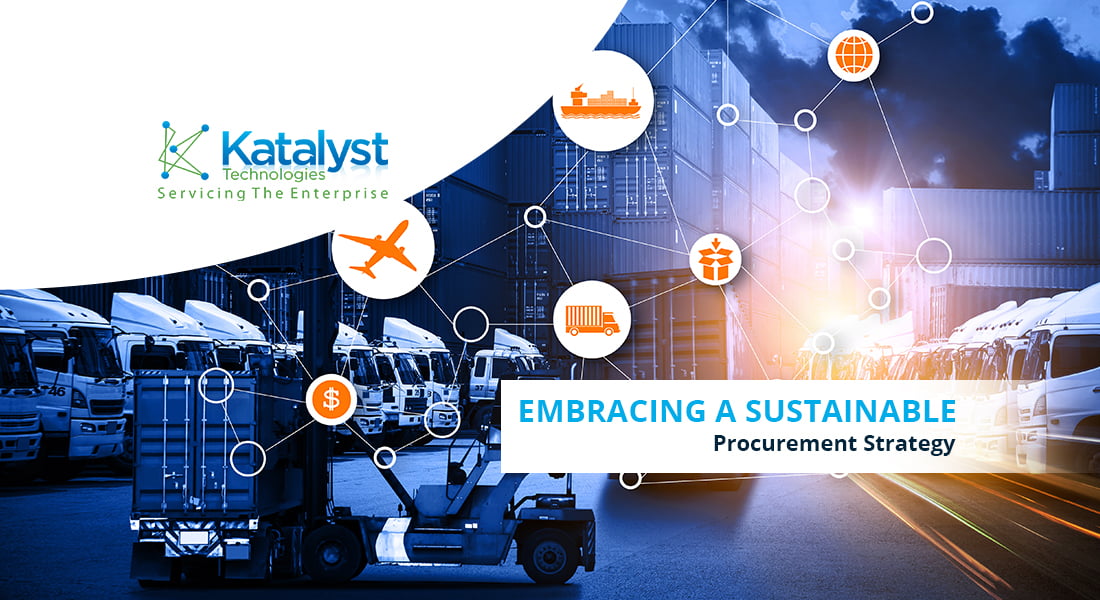
In the past few years, priorities in supply chains and sustainable procurement strategy have shifted dramatically, from rapidly increasing sustainability in their utility grids to doubling their spend optimization.
While these are short-term shifts in response to the business’s growing uncertainty, two themes remain relevant and will receive more attention in the medium and long term, sustainability and diversity. Supply chain management with procurement can no longer be ignored because their impact on businesses goes way beyond the pandemic.
Key to sustainability:
Sustainability is one of the crucial topics among the business leaders and is now on the agenda of every company and under increasing pressure from consumers and investors alike to track their environmental impact. To implement this program, companies need to focus on sustainable public procurement policies.
Here’s how:
Make Sustainable Procurement your #1 Goal:
Procurement leaders need to make decisions based not only on cost, but also on how those decisions impact their communities, environment, and social standing. They need to incorporate socio-economic, environmental, and ethical dimensions into public procurement and processes and fulfill their corporate social responsibilities.
Encourage Stakeholders to Align With Business Goals:
It all starts with a sustainable procurement strategy and subsequently coordinates sustainability goals with management teams and related functions such as finance and product development. Companies also need to train internal teams and align business objectives with their suppliers’ network to ensure that sustainable procurement strategy practices are woven into the value chain.
Ecosystem Sustainability, Long Term Value:
Companies also need to scale their sustainable public procurement efforts to go beyond just suppliers. The goal should be to:
- reduce risk and their carbon footprint
- reduce the total cost of ownership by optimizing processes and making production easier
- increasing compliance with industry regulations and standards
To achieve this goal, companies need to develop the visibility of a more comprehensive supplier network. Instead of penalizing suppliers who fail to meet sustainable procurement strategy requirements, companies can work with them to improve their processes.
How to make various suppliers:
The transformation and inclusion into an integral part of the pay-as-you-go (P2P) payment process is significantly a crucial point which should be taken into consideration.
With the broader social and political movement of citizens and businesses to prioritize diversity and inclusion around the world, the need to increase diversity in the supplier base can no longer be ignored.
For companies to achieve their goals of diversity and inclusion, they need to track indicators and compare them at transaction rates in P2P platforms.
Here is how:
Track diverse supplier spends:
Businesses need to focus on direct costs with small and diverse suppliers. Measurements can translate into departmental costs, cost savings from negotiations, or several scope events or initiatives. Transactional-level data, which provides a key metric, help them understand various provider costs.
Measurement of the indirect effect:
Another requirement is a method of measuring and promoting the main indirect effect. Organizations must be able to study revenue growth in their supply chains to understand the macro-economic impact on the supplier economy.
Establishment of the Diversity and Inclusion Council:
You also need a top-down mandate that uses this metric. For this reason, it is important to establish a diversity board and engage managers with direct lines of communication. The councils will establish goals and guidelines to help the supply chain and procurement teams achieve supplier diversity goals.
To implement a diversity plan, three parameters – direct, indirect and supplier diversity effect must be integrated into the P2P platform. P2P stands for “Peer to Peer”. In P2P network, peers are computer systems that are connected with each other through internet and files can be shared directly between systems on the network without the need of a central server.
Staying on top of evolving directions is crucial for every organization, and Katalyst Technologies is ready to assist you as we are the leaders in offering supply chain management solutions.
Contact us to find a sustainable procurement strategy for your business.

